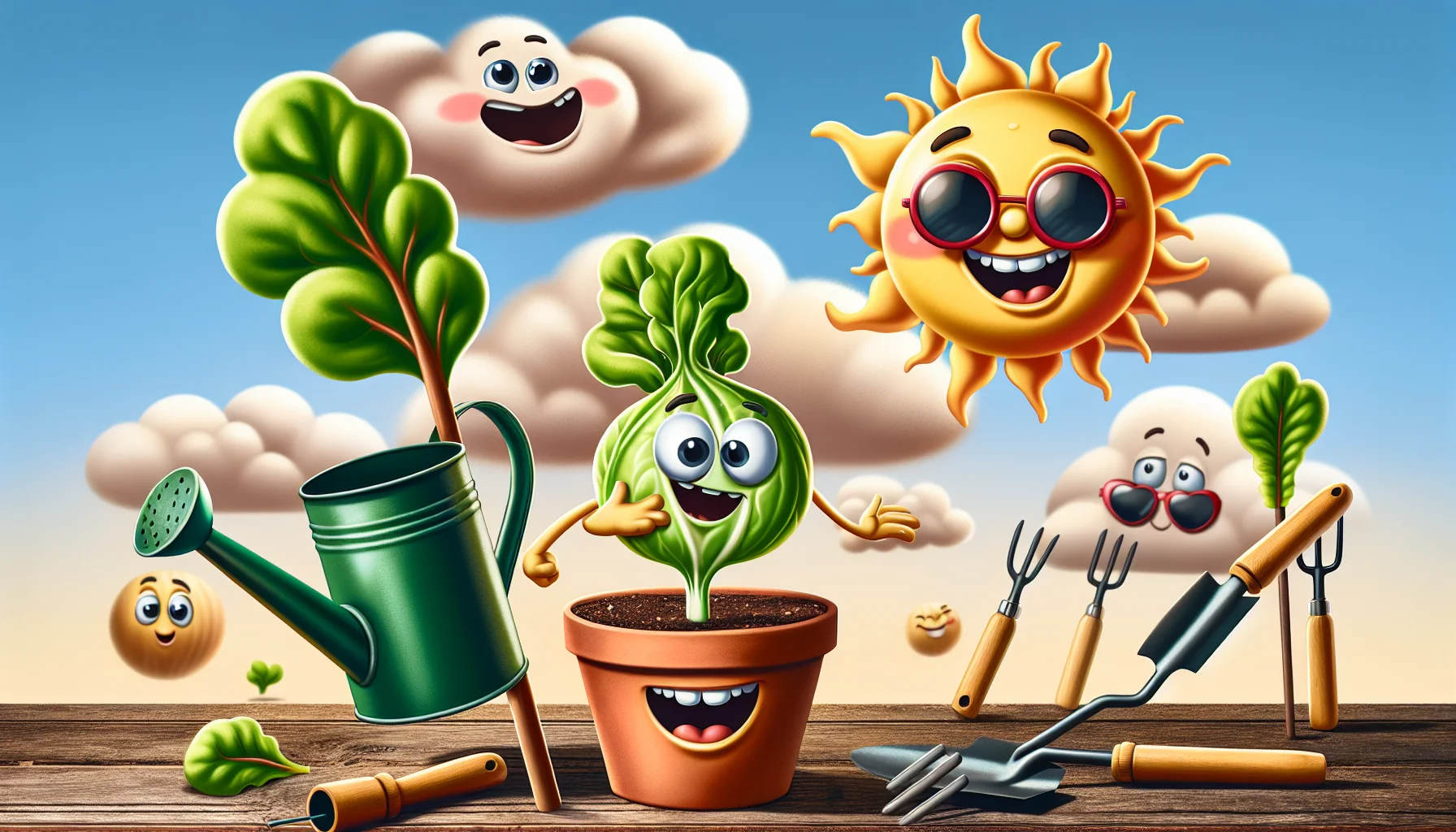Growing lettuce from seed Quiz
Test Your Knowledge
Question of
Growing Lettuce from Seed: A Beginner's Guide
Lettuce is an ideal crop for beginners and experienced gardeners alike, thanks to its quick germination and harvest times. Starting lettuce from seed is not only cost-effective but also allows for a greater variety of choices compared to purchasing starter plants. Lettuce can be grown in many climates and seasons, making it a versatile addition to any garden. Its straightforward growing requirements, including moderate sunlight and consistent moisture, make it an excellent choice for those new to gardening. Furthermore, growing lettuce from seed can be a rewarding experience, offering fresh, leafy greens right from your backyard.
Choosing the Right Lettuce Seeds
When it comes to cultivating lettuce in your garden, selecting the right seeds is crucial for a bountiful harvest. There are several types of lettuce seeds available, each suited to different climates and soil conditions. Among the most popular varieties are Romaine, Iceberg, Butterhead, and Leaf lettuces, each offering unique flavors and textures. To select the best seeds for your garden, consider your local climate and soil type. For cooler climates, Romaine and Butterhead varieties tend to thrive, while warmer areas might be better suited for Leaf lettuces. Additionally, ensure your soil is well-draining and rich in organic matter to promote healthy growth. By paying attention to these details, you can choose lettuce seeds that will flourish in your garden conditions, leading to a successful and delicious harvest.
Step-by-Step Guide to Planting Lettuce Seeds
- Choose a planting site that receives plenty of sunlight and has well-draining soil.
- Prepare the soil by loosening it with a garden fork or tiller to a depth of at least 8-10 inches.
- Enrich the soil by mixing in a layer of compost or well-rotted manure to provide nutrients for the lettuce plants.
- Smooth the soil surface with a rake to create a level bed for planting.
- Water the soil lightly to moisten it before planting the seeds.
- Sow the lettuce seeds directly into the soil, placing them about 1/4 inch deep and 1 inch apart in rows.
- Cover the seeds lightly with soil and gently press down to ensure good contact between the seeds and the soil.
- Water the area gently but thoroughly to moisten the soil without washing away the seeds.
- Keep the soil consistently moist but not waterlogged as the seeds germinate and the lettuce seedlings grow.
- Thin the lettuce seedlings to about 4-6 inches apart once they have a couple of true leaves to ensure adequate space for growth.
Caring for Your Lettuce Plants
Lettuce plants require consistent care to thrive and produce a bountiful harvest. Watering is crucial, as lettuce prefers a steady supply of moisture. It's important not to let the soil dry out, so frequent, light watering is recommended, especially during dry spells. Thinning the seedlings is another vital step to avoid overcrowding and ensure each plant has enough space and resources to grow. This should be done when the plants are young, typically a few weeks after germination. Pest control is also essential in keeping your lettuce healthy. Regularly inspect your plants for signs of pests and manage them using appropriate methods, which can include natural predators, barriers, or, if necessary, organic pesticides. By following these care requirements, you can enjoy a lush, productive lettuce garden.
Harvesting Your Lettuce
To ensure the best flavor and longevity of your lettuce, timing and method of harvest are key. Lettuce is best harvested in the morning when the leaves are crisp, succulent, and full of moisture. For leaf lettuce, you can begin to harvest when leaves are just a few inches long by picking the outer leaves, allowing the center leaves to continue growing. This cut-and-come-again method can extend the harvest period. For head lettuce, wait until the head is firm and full size but before it begins to split or bolt in the heat. Gently cut the head at the base with a sharp knife. After harvesting, wash the lettuce leaves gently in cool water and dry them before storing in the refrigerator to maintain freshness.
Common Problems and Solutions in Growing Lettuce
- Poor Germination: Ensure seeds are not planted too deep; keep the soil moist but not waterlogged. Lettuce seeds need light to germinate, so consider a shallow planting.
- Bolting: Lettuce tends to bolt in high temperatures. Plant in partial shade or use a shade cloth to protect from intense afternoon sun. Choose bolt-resistant varieties.
- Slugs and Snails: Use organic slug pellets or beer traps. Surrounding the lettuce bed with a barrier of eggshells or diatomaceous earth can also deter these pests.
- Tip Burn: Caused by uneven watering and calcium deficiency. Ensure consistent watering and consider applying a calcium-rich foliar spray.
- Mildew and Fungal Diseases: Improve air circulation around plants and water in the morning so foliage can dry before evening. Avoid overhead watering to keep foliage dry.
- Nutrient Deficiency: Yellowing leaves may indicate a lack of nutrients. Apply a balanced liquid fertilizer every two weeks during the growing season.
Enjoying Your Homegrown Lettuce
Growing lettuce from seed in your own garden or container offers a plethora of benefits. Not only does it allow you to have fresh, crisp lettuce at your fingertips, but it also ensures you're consuming produce free of harmful chemicals. Homegrown lettuce tends to be more flavorful than store-bought varieties, largely because you can harvest it at its peak freshness. When it comes to using your lettuce, the possibilities are endless. From salads and sandwiches to wraps and garnishes, homegrown lettuce adds a fresh touch to any meal. To store it, keep the leaves dry and refrigerate them in a loosely sealed bag with a paper towel to absorb moisture. This method can help your lettuce stay fresh for up to a week, ensuring you get the most out of your homegrown greens.












